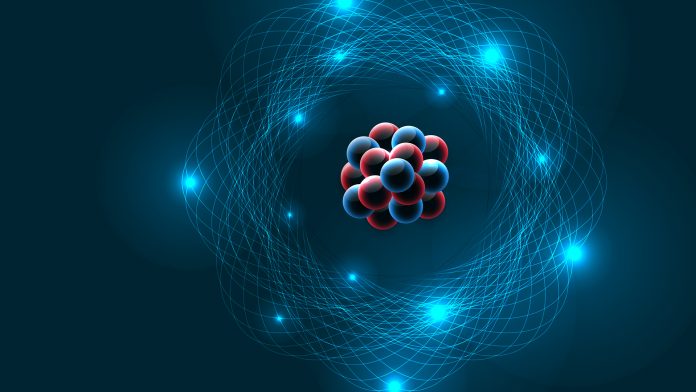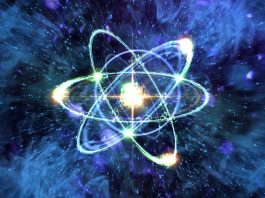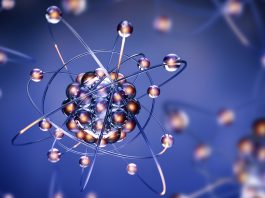In the third in a series of articles on the production of N*s for The Innovation Platform, Lamar University’s Professor Philip L Cole discusses the importance of using both high-intensity pion and electron beams for revealing the inner structure of excited protons (N*s) in the second and third resonance regions that decay through the two-pion channel.
We seek to understand how quarks and gluons self-assemble and thereby emerge in forming protons and neutrons. We therefore seek a better understanding of the nature of the proton – a particle central to physics, chemistry, and the biochemical properties of life. Recent results from interrogating protons with polarized photon and electron beams at Jefferson Lab in Newport News, Virginia, have given us precise information on the substructure of protons and their excitations, leading us to a deeper understanding of the proton. Laboratories in Germany (HADES at GSI) and soon Japan (E45 at J-PARC), however, are using pion beams to probe other aspects of the internal structure of protons. Both electron/photon and pion beams are required in order to reveal the internal structure of the proton. Through a coupled-channel approach, we can identify baryon resonances in a consistent way. These data will allow us to ultimately extract combinations of the underlying amplitudes. The amplitudes govern the nature of the decay process and thereby afford us a means for understanding the physics and crack the conundrum of what makes a proton a proton.
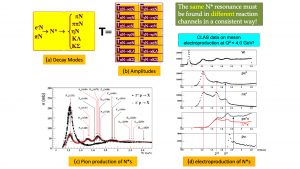
An energetic particle, such as an electron, incident on a nucleon can interact directly with one of the valence quarks inside, causing the quark to undergo a flip in spin or endowing the quark with an orbital or radial excitation. With a quark in a higher energy state, the excited nucleon becomes more massive. Associated with the composite nature of the nucleon is a rich spectrum of excitations. These excited states are called nucleon resonances (N*s) and are short lived (10−24 s, on the order of the time it takes for light to traverse the diameter of the proton). These excited nucleons will dominantly decay into a ground-state nucleon, producing other strongly-interacting particles (called mesons). The types of mesons produced and how they are distributed in the phase space of the decay process provides key information on the internal symmetries of the quarks in the nucleon. The study of these excited states is known as baryon spectroscopy and baryon structure. And just as ordinary optical spectroscopy proved to be the incisive tool for understanding the electronic structure of the elements, we expect by analysing the structure of the excited baryons, we can learn how baryons emerge from quarks and gluons. Quantum chromodynamics (QCD), the theory that governs the strong force, will be our guide.
The meeting ground of theory and experiment is through the spectrum and structure of excited nucleons from amplitude/partial wave analysis, using frameworks developed, for example, by SAID (GWU)1 Bonn-Gatchina (Germany/Russia)2, Bonn-Jülich (GWU/Germany)3, ANL-Osaka (ANL/Japan)4, and Zagreb (Croatia/Germany)5 groups and from reaction models for the Nπ(JLab-Yerevan), π+ −p (JLab-Moscow), and KY (Ghent) exclusive channels in electro-production. The experiments either are being conducted or will soon be performed in the US at Jefferson Lab (JLab), in Germany at the ELSA, MAMI, and GSI facilities, and in Japan at J-PARC and LEPS.
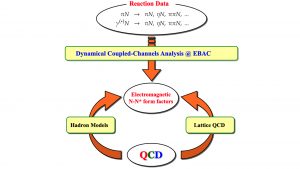
Significant progress is being made on the excited nucleon spectrum. From the recent polarised beam and polarised target experiments, nearly complete sets of spin-observable data are just now becoming available. These precise data will help in resolving ambiguities in the amplitude analyses. Moreover, with the recent electron/photon scattering data from Jefferson Lab, these observables are more precisely determined, allowing for a better analysis of the spectrum6,7 and structure7,8,9,10 of nucleon resonances. Still, this progress has only been afforded solely through electron and photon probes; there have been no new pion beam results for over three decades, creating a significant problem in performing complete coupled-channel analyses.11
Progress is being made on the excited baryon spectrum, phenomenological analyses, transition form factors, and QCD theory. Even though coupled-channels approaches in amplitude analyses of the spectrum of the lower-lying nucleon resonances have reached general agreement, it will remain incomplete without pion beams, which are absolutely required for discerning the higher-lying resonances that decay through the two-pion mode.
To find out more about the experiment, The Innovation Platform spoke to Professor Philip L Cole.
What has 2022 looked like for your work?
In a word – great. With the easing of the pandemic-related restrictions, I can finally travel outside of Southeast Texas and meet with my colleagues across the globe. For effective exchange of ideas, we need face-to-face interactions. This is the first time that physicists active in this area of physics have been able to meet in person since early 2020.
I gave two invited talks at two recent workshops. One was at the APCTP Workshop on Nuclear Physics 2022: Physics of Excited Hadrons in the Present and Future Facilities (11-16 July 2022) in South Korea. My other presentation was held at The 13th International Workshop on the Physics of Excited Nucleons or NSTAR-2022 (17-21 October 2022) in Italy. Both talks were titled Exploring the production of N*s with pion and electron beams, which is also the title of this article. With my colleagues, I am seeking to span the gap across the pion and electron beam divide for helping with advanced coupled-channel and amplitude analyses. For without good work on amplitude analysis, we will not fully understand the data from our pion- and electron-induced N* production. We need the theoretical input. This means experimentalists and theorists need to share their thoughts, critiques, and unpublished progress. The ideas are really coming together now on how to co-ordinate our work in Europe, North America, and Asia.
What progress has been made towards the J-PARC E45 experiment in 2022?
Our beamtime was approved this past May for 15 days scheduled to run in late 2024 for both π– and π+ beams. We will focus on baryon resonances decaying through the double-pion mode (Fig. 1). As was discussed in our March 2022 article, we will collect 130 times the world’s data on pion-induced N*s that then decay through double-pion mode (πp → N* → ππ N). The current world’s double-pion-sample statistics are too sparse for a full amplitude analysis. There will be other reactions, such as N* → ωN as well as KΛ in this dataset. We are poised to make discoveries.
You attended the APCTP Workshop on Nuclear Physics 2022 in July and NSTAR 2022 in October. Can you summarise your presentation and how it complemented the additional research presented there?
Everything is coming together now. With the new photon, pion, and electron beams taking data or scheduled to take place at JLab, J-PARC, LEPS, ELSA, GSI, and MAMI in the near future, and with the advances of theory and phenomenology, we are on the verge of solving the fundamental problem of how structures and mass emerge from quarks and gluons. But we will continue to stay on that frustrating verge unless we co-ordinate and consolidate our efforts across continents and across theoretical and experimental groups. We need a catalyst to make the transformation.
What were the most outstanding findings presented at these workshops and how can the work of others support your research?
Holding these two workshops has been the catalyst for co-ordinating work between the experimental and theoretical nuclear physicists and it spans the divide between the two communities of the space-like (electron beams) and time-like (pion beams). We are a small community and we need to band together to crack this conundrum of the proton. I posed the following questions to the members of the audience in my presentation at these two workshops. Here, TL = time-like (q2 > 0) and SL = space-like (q2 < 0). Photons are at q2 = 0 and are space-like. The q2 = 0 point anchors the SL to the TL regimes.
- How can we compare the helicity amplitudes between SL and TL regimes?
- Can the data in the SL region afford constraints for those in the TL regime?
- What is the relationship between the density matrix elements for SL & TL? Again, do they offer any constraints on the helicity amplitudes between the SL and TL regimes?
- Will there be scaling in the q2 > 0 and q2 < 0 regimes?
- How to analyse – amplitude analysis and/or coupled channel approach?
- What role does the meson-baryon cloud play?
- What are the relevant degrees of freedom as a function of q2 for the SL and TL regimes?
How important has international collaboration been for your work?
I cannot overstate the importance of collaborating across Asia and Europe. It brings us all together towards studying the emergent behaviour of quarks and gluons, which assemble into the proton. Understanding what makes a proton a proton and how a proton may acquire mass from the emergence of quarks and gluons is a fundamental question of the nature of matter. We need talent across the globe to understand protons.
What does the near future hold for your research?
For the near term, I will focus on the experimental aspects of my work at J-PARC, JLab, and ELSA (BGOOD experiment). I am hoping our recent workshops will create that spark to ignite and catalyse a transformative understanding of how force and mass interrelate at the subatomic scale.
For the not-too-distant future, I anticipate that our research will shed light on the objectives to:
- Understand the underlying structure of nucleons in terms of the time-like and space-like electromagnetic baryonic form factors and transitions;
- Delineate the spectrum of excited baryon states; and
- Describe and detail how quarks are confined and acquire mass through the mechanism of dynamical chiral symmetry breaking.
I will close with citing extracts from the abstract of the 2015 article in EPJ titled Physics opportunities with meson beams11: “To reap the full benefit of the high-precision electromagnetic data, new high-statistics data from measurements with meson beams are critically needed to advance our knowledge in baryon and meson spectroscopy and other related areas of hadron physics. … The present paper summarizes unresolved issues in hadron physics and outlines the vast opportunities and advances that only become possible with such a facility.”
There were 135 endorsers from 77 labs worldwide. The paper was circulated worldwide before it was published.
The time has come to understand the structure of the proton and that is only possible through understanding how the internal components of the proton, the quarks and gluons, emerge to form nucleons (protons and neutrons, collectively). Over 99.95% of the mass of the visible Universe comes from nucleons. Hence, the research seeks to ultimately understand the nature of where mass comes from as the quarks and gluon combine to form N*s, the excited states of nucleons.
The proton is a mystery. We hope to help reveal the mysteries of the structure of the proton.
Acknowledgements
I gratefully acknowledge NSF PHY-2012826 for supporting my research. And a heartfelt thanks to the organisers and to all the participants at the workshop in South Korea sponsored by the Asia Pacific Center for Theoretical Physics (July 2022) and the NSTAR-2022 workshop in Italy and sponsored by the Istituto Nazionale di Fisica Nucleare and U Roma Tor Vergata (October 2022).
References
- Search for narrow resonances in πp elastic scattering from the EPECUR experiment, A Gridnev et al. (W J Briscoe, I I Strakovsky, R L Workman), Phys. Rev. C93, 062201 (2016) [arXiv:1604.02379 [nucl-ex]]
- Properties of baryon resonances from a multichannel partial wave analysis, A V Anisovich, R Beck, E Klempt, V A Nikonov, A V Sarantsev, U Thoma, Eur. Phys. J. A48, 15 (2012) [arXiv:1112.4937 [hep-ph]]
- Eta photoproduction in a combined analysis of pion- and photon-induced reactions, D Rönchen, M Döring, H Haberzettl, J Haidenbauer, U G Meißner, and K Nakayama, Eur. Phys. J. A51,70 (2015) [arXiv:1504.01643 [nucl-th]]
- Nucleon resonances within a dynamical coupled-channels model of πN and yN reactions, H Kamano, S X Nakamura, T S H Lee, and T Sato, Phys. Rev. C 88, 035209 (2013) [arXiv:1305.4351 [nucl-th]]
- Amplitude- and truncated partial-wave analyses combined: A novel, almost theory-independent single-channel method for extracting photoproduction multipoles directly from measured data, A Švarc Y Wunderlich, and L Tiator, Phys. Rev. C 102, 064609 (2020) [arXiv:2008.01355 [nucl-th]
- Determining pseudoscalar meson photoproduction amplitudes from complete experiments, A M Sandorfi, S Hoblit, H Kamano, and T-S H Lee, J. Phys. G, Nucl. Part. Phys. 38 053001 (2011) (53pp) doi:10.1088/0954-3899/38/5/053001.
- 2022 Review of Particle Physics, R.L. Workman et al., (Particle Data Group), Progress of Theoretical and Experimental Physics, Volume 2022, Issue 8, August 2022, 083C01, https://academic.oup.com/ptep/article/doi/10.1093/ptep/ptac097/6651666
- Studies of Nucleon Resonance Structure in Exclusive Meson Electroproduction, I G Aznauryan et al., Int.J. Mod. Phys. E22, 133015 (2015) [arXiv:1212.4891 [nucl-th]]
- Electroexcitation of nucleon resonances. I G Aznauryan and V D Burkert, Prog. Part. Nucl. Phys. 67, 1 (2012) [arXiv:1109.1720 [hep-ph]]
- New Results from the Studies of the N(1440)1/2+, N(1520)3/2−, and ∆(1620)1/2−Resonances in Exclusive ep→e’p’π+π− Electroproduction with the CLAS Detector, V I Mokeev V D Burkert, D S Carman, L Elouadrhir, G V Fedotov , E N Golovatch , R W Gothe, K Hicks, B S Ishkhanov, E L Isupov , Iu. Skorodumina , Phys. Rev. C 93, 025206 (2016) [arXiv:1509.05460 [nucl-ex]]
- Physics opportunities with meson beams, W J Briscoe, M Döring, H Haberzettl, D M Manley, M Naruki, I I Strakovsky, and E S Swanson, Eur. Phys. J. A51, 129 (2015) [[arXiv:1503.07763 [hep-ph]]
Please note, this article will also appear in the twelfth edition of our quarterly publication.

